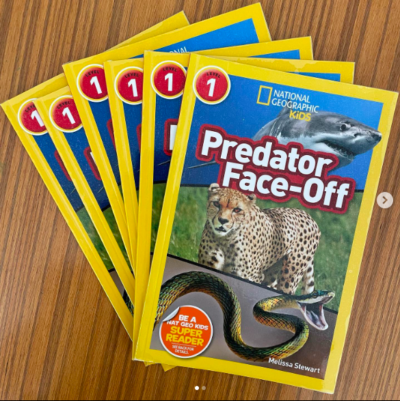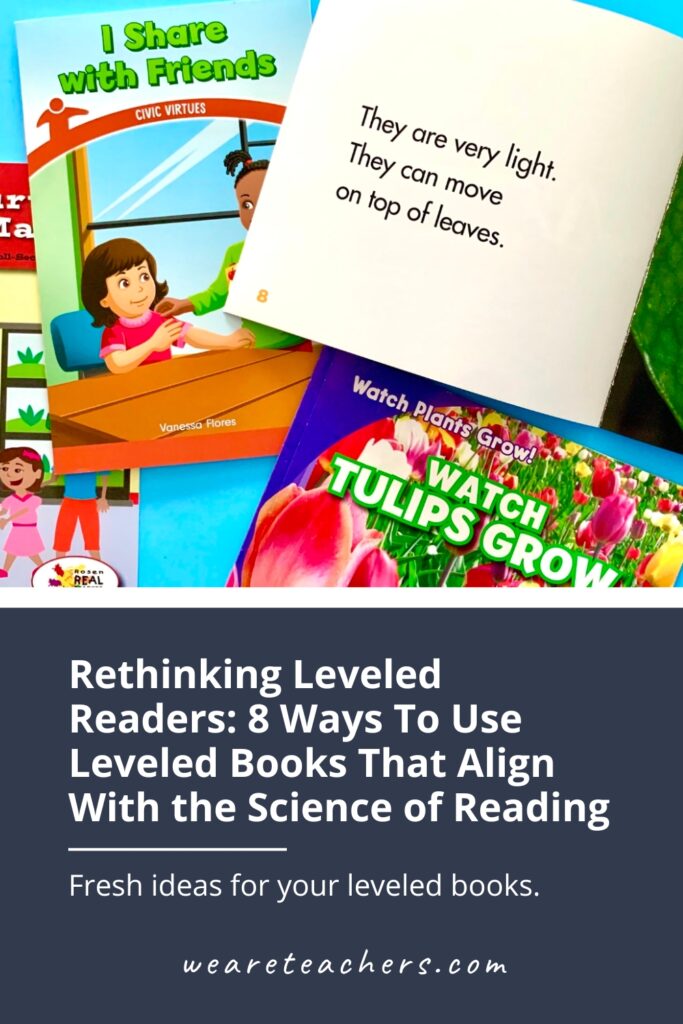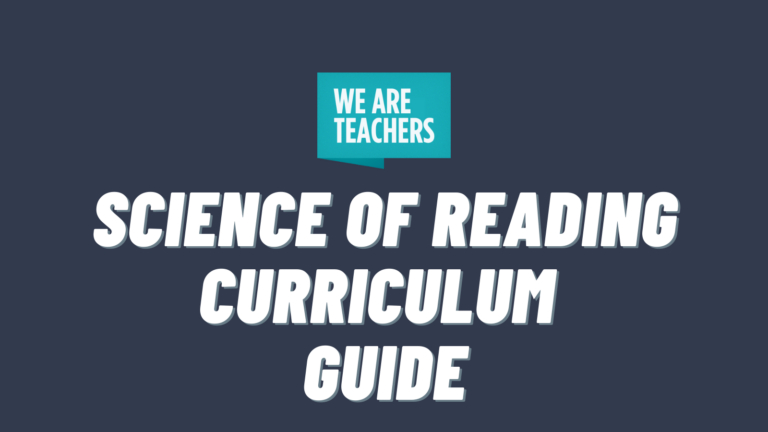If you teach elementary literacy, you’ve probably heard science of reading advocates cheering for decodable text. The benefits are legit: Decodable text gives kids more chances to apply their phonics knowledge to reading instead of encouraging poor reading habits like guessing at words. But what about your (expensive!) collection of leveled readers? Leveled readers don’t have the same tightly controlled phonetic demands as decodable books, but they do increase strategically in difficulty. Many leveled books also have content that kids like. Plus, as kids grow as readers, they definitely need chances to read without those decodable training wheels.
Even if you shift toward using more decodable text in your classroom, don’t feel like you have to toss out your whole leveled library to align your teaching with the science of reading. Check out these ideas for using leveled readers alongside decodable text.
1. Use leveled readers with support
The world isn’t always 100% decodable, so of course we want students to be exposed to more varied reading material. Leveled books can provide this—just make sure you’re there to help! Definitely choose leveled books that have some words kids can decode using phonics skills they’ve learned, and some high-frequency words they’ve learned or can decode like regular words. Then, be available to give on-the-spot help with words that include phonics patterns they haven’t learned yet. Students will still get the benefit of some decoding practice, and they’ll also get to enjoy and learn from the content of the leveled book.
2. Pre-teach tricky vocabulary

Source: Mrs. Winter’s Bliss
Leveled readers often expect kids to rely on the pictures or context to guess at challenging words rather than decode them. Help kids decode and discuss them before reading to pre-teach these words instead. Pre-teaching vocabulary is a reliable strategy for building language knowledge, too, so it’s a win-win.
3. Use leveled readers during strategy groups
Strategy groups can include readers at different levels who need work on the same thing, and you could use leveled books that fit your teaching goals. (Remember to give decoding support as needed to discourage guessing at words.) Strategy groups could use leveled books to help learn about things like:
- Conventions (Like how to attend to ending punctuation or how quotation marks work)
- Fluency (Like how to “scoop” phrases)
- Genre features (Like practicing using the table of contents and chapter headings in nonfiction books)
- Comprehension (Like how to retell key events in a story)
4. Use leveled books to build oral language
Get the most out of those supportive leveled book illustrations! Bypass the text and use leveled readers like wordless books. Use them to support English learners or other students who need to build oral language or practice speaking in complete sentences.
5. Build student background knowledge

Source: @library_learninghub
We know that background knowledge and vocabulary are essential for reading success, and leveled readers cover tons of subject matter. Pull together a collection of leveled books around a topic and use them with support to expose kids to science and social studies vocabulary and concepts. Or pick books with topics that fit kids’ interests to get them excited about reading.
6. Use leveled books as attainable writing mentor texts
There is so much fantastic children’s literature out there to model writing craft strategies for kids. But sometimes—especially for young students—it can be overwhelming to try to write like an award-winning adult author. Uncluttered and straightforward leveled readers can be perfect for showing kids manageable examples of what a personal narrative, a “how-to” procedural book, or an “all about” nonfiction book look like.
7. Rewrite your leveled readers
Yes, teaching kids to point to the words, follow a pattern, and guess based on the pictures in a predictable book helps them feel like readers, but they are not actually reading. So who says you can’t rewrite some of your favorite predictable texts to be more decodable? (This gets easier with practice. It helps to arm yourself with a list of high-frequency words your students know or can decode and word lists for the phonics patterns they’ve learned.)
8. Use leveled readers for student writing and comprehension work

Source: Reading Rockets
Challenge students to level up those leveled books by adding sticky notes! All the white space on the page is ideal for students to write a more detailed narrative or try out writing craft moves. Adding speech or thought bubbles to the illustrations can help students practice inferring what a character might say or think. In nonfiction leveled readers, students can add labels or captions to the photos.
Do you have other great ways to use leveled readers in your classroom that align with the science of reading? Share your ideas in the comments!
Plus, sign up for our newsletters to get all the latest learning ideas, straight to your inbox.


